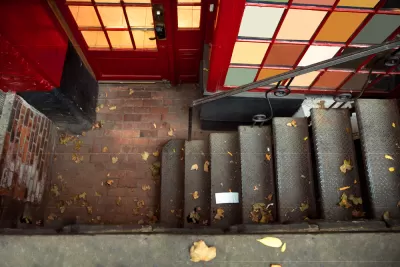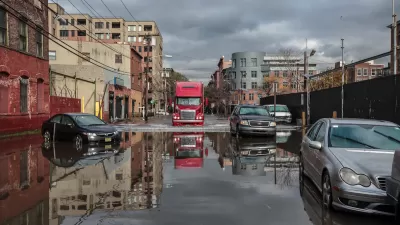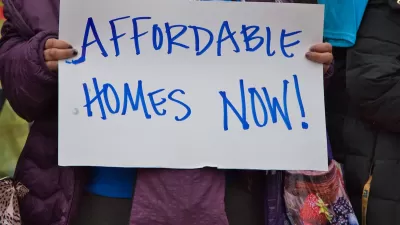Managers of affordable housing at the deadly northern end of Ida's path review what worked, what didn't, and what we might need to abandon altogether.

When the remnants of Hurricane Ida struck the Northeast in early September, the region was inundated by devastating flash floods. Across four states, the storm killed more than 40 people, caused up to $24 billion in property damage, and knocked out power to 150,000 homes. New Jersey and New York City were hit particularly hard—30 New Jersey residents drowned in their homes and vehicles, and in NYC, 13 residents died, most drowning in their basement apartments.
The storm exceeded expectations for a 500- to 1,000-year rainfall event, according to researchers at Cornell’s Northeast Region Climate Center. The event’s improbability helps to explain why the region’s infrastructure was so ill-prepared for the rapid influx of water. But extreme storms like Ida will not be so rare in the future, and our cities, along with their affordable housing stock, will need to adapt.
A New York City panel on climate change forecasts that, by 2050, what is now classified as a “100-year flood” will occur three times more often in New York City. Sea levels will rise by 30 inches, and there will be up to five days each year with more than 2 inches of precipitation. The panel also expects the number of days that top 90 degrees Fahrenheit in the city to triple by 2050, posing public health risks from extreme heat.
The climate crisis presents an existential threat the world over, and it’s bumping up against the affordable housing crisis in expensive metropolitan areas like New York City. The city’s population is projected to grow from 8.8 million residents to 9.2 million by 2050. That growth is expected to concentrate in the Bronx and Brooklyn, two boroughs that saw massive flooding during Ida.
As demand for housing rises, preventing climate-related disasters from eroding the already-scarce supply of affordable housing will be critical, says Laurie Schoeman, national director of resilience and disaster recovery at Enterprise Community Partners (Enterprise), a nonprofit that works to address the housing affordability crisis through policy, programming, and capital investment.
“A lot of existing affordable housing is exposed to extreme climate risk, in flood zones, in areas that are apt to burn, or in drought zones,” says Schoeman. “These units are in the direct path of climate change and they’re facing extinction.”
So, how can we protect our existing affordable housing stock from more frequent and extreme weather events, and build new housing that can withstand the effects of a warming climate? And what lessons can Ida offer to affordable housing managers and owners whose properties are at risk?
A Shifting Picture of Risk
As storms like Ida become more frequent, building owners and managers may be forced to ...
FULL STORY: After Ida, How Can Affordable Housing Withstand Climate Impacts?

Study: Maui’s Plan to Convert Vacation Rentals to Long-Term Housing Could Cause Nearly $1 Billion Economic Loss
The plan would reduce visitor accommodation by 25,% resulting in 1,900 jobs lost.

North Texas Transit Leaders Tout Benefits of TOD for Growing Region
At a summit focused on transit-oriented development, policymakers discussed how North Texas’ expanded light rail system can serve as a tool for economic growth.

Using Old Oil and Gas Wells for Green Energy Storage
Penn State researchers have found that repurposing abandoned oil and gas wells for geothermal-assisted compressed-air energy storage can boost efficiency, reduce environmental risks, and support clean energy and job transitions.

Santa Barbara Could Build Housing on County Land
County supervisors moved forward a proposal to build workforce housing on two county-owned parcels.

San Mateo Formally Opposes Freeway Project
The city council will send a letter to Caltrans urging the agency to reconsider a plan to expand the 101 through the city of San Mateo.

A Bronx Community Fights to Have its Voice Heard
After organizing and giving input for decades, the community around the Kingsbridge Armory might actually see it redeveloped — and they want to continue to have a say in how it goes.
Urban Design for Planners 1: Software Tools
This six-course series explores essential urban design concepts using open source software and equips planners with the tools they need to participate fully in the urban design process.
Planning for Universal Design
Learn the tools for implementing Universal Design in planning regulations.
Ascent Environmental
Borough of Carlisle
Institute for Housing and Urban Development Studies (IHS)
City of Grandview
Harvard GSD Executive Education
Toledo-Lucas County Plan Commissions
Salt Lake City
NYU Wagner Graduate School of Public Service





























